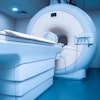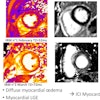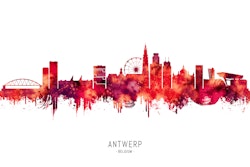Managers at ZNA Cadix have revealed that the suspension of seven radiologists will be “permanent and immediate,” after a further investigation of the group’s work highlighted more errors, according to the latest reports in the Belgian media.
An article posted on 21 June by The Brussels Times noted that ZNA Cadix -- a hospital located in Het Eilandje, Antwerp that opened in September 2023 -- has announced that “continuing collaboration with the implicated radiologists is untenable. It has been determined that the medical imaging service does not meet universally accepted quality standards.”
The hospital's investigation scrutinized 1,300 cases, of which 500 were rigorously examined. Of these, 52 were identified as potentially influencing patient safety, prompting the hospital to contact 24 patients, the article reported. ZNA Cadix said trust could not be re-established with six of the physicians, while the seventh was offered the chance to continue working at the hospital under supervised conditions but declined. It stated it would continue its investigations and take additional action where necessary, and it also said the personal responsibility of the radiologists remained “fully applicable,” The Brussels Times continued.
According to an article posted on 20 June by VRT, the decision was made by mutual agreement, in the form of a so-called settlement agreement, and there was “no dismissal, removal or termination by the board” of the radiologists. “This is only possible if the medical council provides advice on this. Precisely because it was decided by mutual agreement to stop the collaboration, that advice was no longer necessary,” VRT reported.
However, doubts remain about whether the correct procedure has been followed. Municipal councillor Mie Branders has strong reservations about the dismissal of the doctors. “We would think that, for example, there would first be internal discussions with those doctors and that internal improvement processes would be set up,” she is quoted as saying in the VRT article.
Branders, who was a candidate in the 2024 Belgium Chamber of Representatives election and is a general practitioner, is also curious to know why the radiologists who worked for many years in other hospitals suddenly made mistakes in the new Cadix hospital. She thinks it’s important to look at the structural changes, such as workload, that could have changed after the move to a larger hospital.
The audit conducted by several doctors from inside and outside the hospital showed that the quality of medical imaging did not always meet the strict quality standards, VRT reported. “Initially 24 errors were identified, later it turned out to be 52. It is not clear what errors were made ... The hospital network promises to analyze all images from the past 12 months and determine whether new images need to be taken. That investigation is still ongoing.”
Earlier in the week, the Belgian Society of Radiology (BSR) wrote to its members to voice concerns about the suspensions at ZNA Cadix. According to an article posted on 17 June by De Specialist, the BSR refuses to comment on the specific facts and circumstances of this case, “but reports that reach us via the media do cause us great concern in various areas. This concerns the organization of medical audits.”
Radiology’s shortcomings?
Among the medical imaging community, debate continues over the causes of the apparent failures at the new hospital.
A major problem at ZNA Cadix was that the radiologists were recruited from smaller hospitals that had been forced to close, a source told AuntMinnieEurope.com. “They focused on some subspeciality areas of radiology, that were in high demand in their previous workplaces, but suddenly they were forced to deliver services covering a much wider spectrum of requests and diseases, which they were not used to.”
Given the diverse backgrounds, training, and expertise of the newly constituted group, there may have been a lack of cohesion, consistency, and team spirit, and this reflected in their work, the source pointed out. Some of the radiologists were determined to remain as independent as possible, and at least one of them worked more in his private practice than in ZNA Cadix. “The individual radiologists were parachuted into a pre-defined environment, working with equipment, software, and workflows that they had not been able to choose or organically develop. They did not have a sense of ownership and there likely was a lack of strong leadership,” the expert said.
The absence of a rigorous quality assurance system in Belgium may have been a contributory factor, a second source commented.
“In the Netherlands, all medical departments are visited on a regular basis by members of a professional committee – for radiology, these are specifically trained and assigned radiologists sent by NVVR, the Dutch Society of Radiology,” the source explained. “Such visits take at least three days and a complete report shows the main problems. In Belgium, such a system is completely lacking.”
Regarding the legal angle about the mutual agreement to stop the collaboration at ZNA Cadix, in Dutch this is called “dading” (settlement agreement), added the first source. "It means that both parties agree that they will part out of their own volition and not sue or seek punitive damages. It is a fairly commonly used legal trick in Belgium. It ensures the employer that they will not be sued, and it provides an ‘easy’ pay-out to the dismissed employees."
The individuals are held to a code of silence; if they comment, they would lose the financial compensation in the contract, according to the source. In case of ‘dismissal’, that decision would need to be condoned by the Medical Council, after a so-called 360-degree evaluation, and it would likely end in a lawsuit and costly, lengthy, and with big reputational damage for all concerned. In such cases, the management might make a payment to the individuals of, say, one or two years’ worth of salary.





















